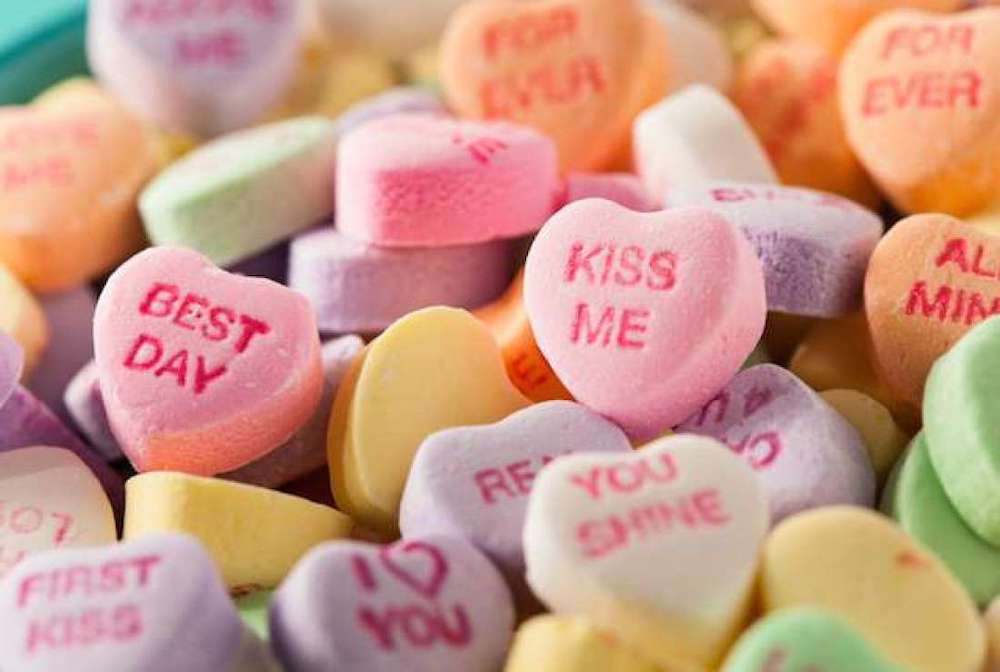February – Mixed Nuts :Expressive He(art)s

Materials:
White paper, pencils, gloves (no need to be matched pairs). Wool or cotton is preferable, but rubber or latex gloves are ne as well. (Be careful of any allergies!) You’d be surprised how many of us have old mismatched gloves lying around the house but gloves may be found for very little money at Salvation Army/Goodwill Stores, and for free in lost-and-found boxes in schools and other public places. You will also need assorted fabrics, needles and thread or fabric glue, yarn, but- tons, sense of humor, fabric markers.
How To:
Glove puppets are not a new concept in art therapy, but rarely are they used to explore issues related to growing a positive body image. Because the metaphor of the hand can be interpreted in so many ways as it relates to food, love, self-soothing, holding on and letting go, the possibilities for using this activity are limitless. Here are a few suggestions of themes to help you explore your personal and unique journey on the road to self-acceptance:
• When you reach for something to eat, what are some of the things you are reaching for that are not related to the food?
• What are some positive things about your body and/or your life that you would like to hold onto?
• What new experiences or feelings would you like to grab onto?
• Who or what positive influences do you want to keep nearby and easily accessible in your life?
1. Now, trace your hand on a piece of paper to plan out what you would like your g(love) puppet to look like. Will you use the entire glove to ex- press one complete image or create a glove with each finger representing something different? There is no right or wrong choice!
2. Once you have designed your puppet, use the materials you gathered and recreate a three dimensional version of your sketch. Re- member, this is for YOU, so if you want to use glue that’s great, if you want to sew, that’s ne too. You may choose to put things in the palm of the glove that you want to hold on to and decorate the outside with what makes it difficult for you to do that.
You may opt to decorate each finger as a factor that contributes to your emotional eating and the palm of the glove may have a symbol of what you can do to fulfill your needs differently. If you can imagine this activity as creating your own personal “helping hand”, you will end up with a tangible reminder that you can slip into (literally or figuratively). When challenges arise and you want to get back on the track of self-acceptance and a less conflicted relationship with food, this can be…wait for it… very…handy.
Why
Punch and Judy, Sesame Street, Glovey in Yellow Submarine, and the infamous Shari Lewis’ Lambchop are just a few examples of how hand puppets have been used in delightful ways to convey all kinds of messages. Pledges often involve placing our hand over our heart to indicate our dedication to the pledge, and the expression, my heart is in my hand” professes open and authentic love to another person. Unless we have lost the use of our hands as a result of a disability, we typically use them to soothe a loved one or to reach for food. Hands can be an important metaphor when used in conjunction with the expressive heARTs.
Spread the Word
Materials:
Paper, pencils, pens, markers, collage materials, glue sticks, scissors. Optional: Access to the Internet.
How To:
1. Choose one aspect of eating disorders or body image that you would like to share with people via a social media tool (e.g., Twitter, Facebook, Tumblr, Digg, email, Blog, etc). You can also try designing a logo/symbol for Eating Disorder awareness and include one specific reason why it is important to increase our own and others’ awareness of ED’s or Body Image Dysmorphia.
2. Choose which social media tool or tools you are going to design the information for, taking into account word limits, graphics, privacy considerations, etcetera.
3. Using the art materials you have available, design a “post” about your personal experience with an eating disorder or information about eating disorders/body image to share with someone who may either have an e.d., work with clients, or have a family member for whom eating dis- orders are an issue. This can be anything from creating a full Facebook page, a Pinterest photo, or as simple as a Tweet. When your piece is finished, if you feel comfortable share it with at least one other person either via social media or in person. I am always happy to receive your work at drdeah@drdeah.com. See what insights or questions emerge. What do you feel the other person/people learned from your piece?
4. If appropriate, post the finished work on a Social Media Site during February’s National Eating Disorders Awareness Week.
Why:
February’s Eating Disorders Awareness Week provides us the opportunity to learn more about our own eating disorder/body image issues and/ or to educate others. Sometimes, when we work on something for someone else, we are less inhibited because we want to help. Have you ever had the experience where you would do something for someone else before doing anything for yourself? This generosity of spirit and altruism frequently opens up information that is applicable and meaningful in our own personal journey to body positivity and self-acceptance.
